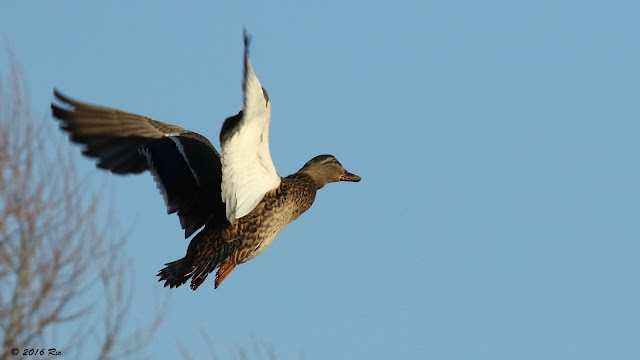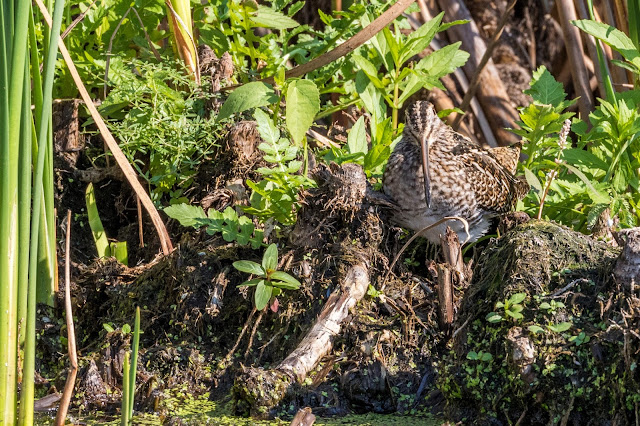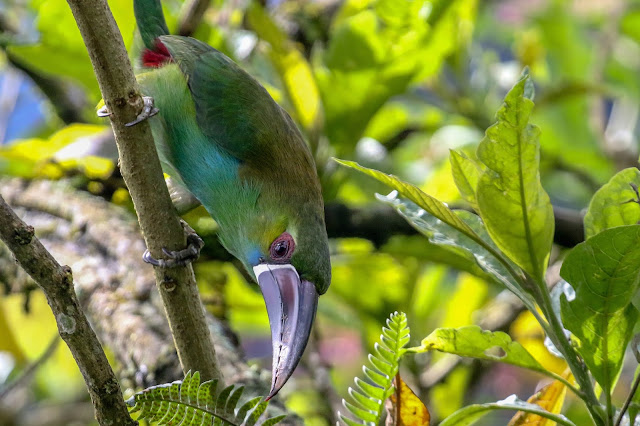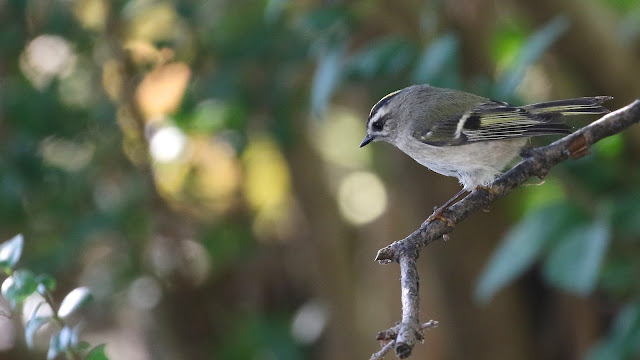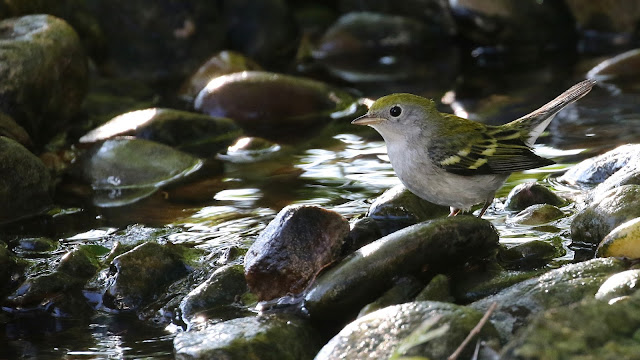We had a great warbler day at the pond in the yard today with Anne spotting while I tried to take photos of everything. Among others, 10 warbler species -Cape May, Bay Breasted, Blackpoll,Black throated blue, Black throated green,yellow rump, Nashville, northern Parula, Tennessee and this Chestnut-Sided. Others in the yard included Hairy, Downy, Red-Bellied and Flicker, red breasted and white breasted nuthatches, hummingbird, ruby crowned and golden crowned kinglets, tufted t itmouse, blue headed vireo and a junco. Then there was the pontoon ride, sora, snipe, American bittern, Rusty blackbirds, ruddy ducks, coots, mallards, widgeon, great blue heron, great egret, sandhill cranes, harrier, kingfisher and two more warbler species - Palm and Yellow. To top everything off it was a gorgeous day weather wise. Setophaga pensylvanica On the wintering grounds in Central America the Chestnut-sided Warbler joins in mixed-species foraging flocks with the resident antwrens and trop...
